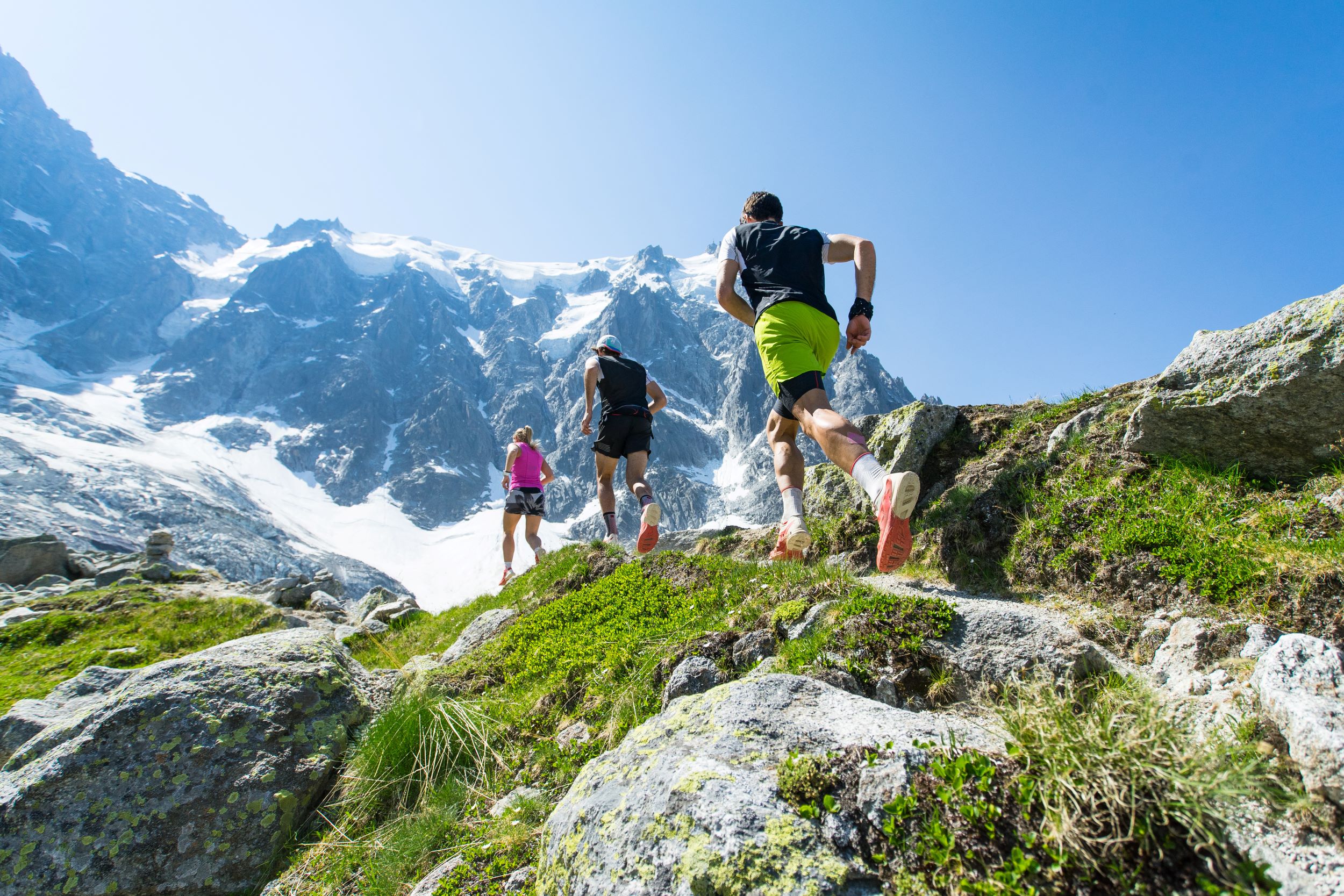Trail running offers a unique way to experience the beauty of nature while getting a great workout. When it comes to running in mountainous regions, the experience becomes even more exhilarating and rewarding. The challenge of varied terrain, the stunning vistas, and the fresh mountain air make trail running in mountainous areas an adventure worth undertaking. This guide will walk you through the essentials of trail running in the mountains, from preparation and techniques to tips and safety.
The Allure of Mountain Trail Running
Embracing Nature’s Challenge
Mountain trail running provides a physical and mental challenge unlike any other. The terrain is unpredictable, with steep ascents, rocky paths, and sudden drops. This variability requires strength, agility, and endurance, making each run an exciting new test of your abilities.

Breathtaking Scenery
Running in the mountains means immersing yourself in some of the world’s most stunning landscapes. The reward for your effort is often panoramic views, serene alpine meadows, and a sense of being far removed from the hustle and bustle of everyday life.
Mental Rejuvenation
The mountains are a place of peace and solitude. The fresh air, natural surroundings, and the rhythmic motion of running create a meditative experience that can help clear your mind and reduce stress.
Preparation for Mountain Trail Running
Building Physical Fitness
Mountain trail running demands a high level of physical fitness. Before tackling mountainous terrain, ensure you have a solid running endurance and strength foundation.
- Endurance Training: Gradually increase your running distance and incorporate long runs into your weekly routine.
- Strength Training: Focus on building leg strength through exercises like squats, lunges, and hill sprints. Core strength is also crucial for stability on uneven terrain.
- Flexibility and Balance: Incorporate yoga or dynamic stretching into your routine to improve flexibility and balance.
Gear Essentials
Proper gear can make a significant difference in your trail running experience. Here are the essentials:
- Trail Running Shoes: Invest in a good pair of trail running shoes with ample grip and support. Look for shoes with aggressive tread patterns for better traction on rocky and muddy trails.
- Clothing: Wear moisture-wicking, breathable fabrics to stay comfortable. Layering is key in mountainous regions where weather conditions can change rapidly.
- Hydration Pack: A hydration pack or vest is essential for carrying water and nutrition, especially on longer runs.
- Safety Gear: Always carry a map, compass or GPS device, whistle, and a small first aid kit. A lightweight jacket and emergency blanket can also be lifesavers in unexpected weather conditions.
Planning Your Route
Before heading out, plan your route carefully:
- Research Trails: Use resources like trail running websites, apps, and local guidebooks to find trails suitable for your fitness level and experience.
- Understand the Terrain: Study the elevation profile, distance, and difficulty of the trail. Be aware of any potential hazards like steep drop-offs or river crossings.
- Weather Conditions: Check the weather forecast and be prepared for sudden changes. Mountain weather can be unpredictable, with temperatures dropping quickly and storms rolling in without warning.
Techniques for Mountain Trail Running
Uphill Running
Running uphill requires a combination of strength and technique:
- Short Strides: Use short, quick steps to maintain balance and momentum.
- Lean Forward: Lean slightly into the hill, keeping your back straight and your center of gravity over your feet.
- Use Your Arms: Pump your arms vigorously to help drive your legs forward. Your arms play a crucial role in maintaining rhythm and momentum.
- Pace Yourself: Start slowly and find a sustainable pace. Walking steep sections is acceptable and often more efficient than trying to run.
Downhill Running
Downhill running can be exhilarating but also risky if not done correctly:
- Stay Relaxed: Keep your body relaxed and loose to absorb the impact and adapt to the terrain.
- Lean Forward Slightly: Lean slightly forward from your ankles, not your waist. This helps maintain balance and control.
- Quick, Light Steps: Take quick, light steps to reduce the impact on your joints and improve stability.
- Use Your Arms for Balance: Extend your arms out to the sides for balance, especially on technical or uneven terrain.
Navigating Technical Terrain
Technical terrain includes rocky paths, roots, and uneven surfaces:
- Keep Your Eyes on the Trail: Look a few steps ahead to anticipate obstacles and plan your foot placement.
- High Knees: Lift your knees higher than usual to clear obstacles and reduce the risk of tripping.
- Engage Your Core: A strong core helps maintain balance and stability on uneven ground.
- Stay Flexible: Be prepared to adjust your stride and pace according to the terrain.
Tips for a Successful Mountain Trail Run
Start with Shorter Trails
If you’re new to mountain trail running, start with shorter, less technical trails to build confidence and experience. Gradually progress to longer and more challenging routes as your skills improve.
Hydration and Nutrition
Proper hydration and nutrition are crucial for maintaining energy levels and performance:
- Hydrate Regularly: Drink small amounts of water frequently rather than large amounts at once.
- Electrolytes: Consider electrolyte supplements or sports drinks to replenish salts lost through sweat.
- Nutrition: Carry energy gels, bars, or other easily digestible snacks to fuel your run. Aim to consume carbohydrates at regular intervals to sustain energy levels.
Respect the Environment
Trail running in mountainous regions often takes you through protected and fragile ecosystems. Follow these principles to minimize your impact:
- Leave No Trace: Pack out all trash and leave the trail as you found it.
- Stay on Designated Trails: Avoid creating new paths, which can lead to erosion and habitat destruction.
- Respect Wildlife: Observe animals from a distance and avoid disturbing their natural behavior.
Safety First
Safety should always be a priority when trail running in the mountains:
- Run with a Partner: Whenever possible, run with a partner for added safety and support.
- Inform Someone: Let someone know your route and expected return time.
- Be Prepared for Emergencies: Know basic first aid and how to handle common trail injuries. Carry a phone or emergency communication device in case you need help.
Embrace the Adventure
Trail running in mountainous regions is an adventure like no other. The combination of physical challenge, breathtaking scenery, and the sense of accomplishment makes it a deeply rewarding experience. By preparing properly, mastering key techniques, and respecting the environment, you can enjoy the many benefits of mountain trail running. Lace up your trail shoes, embrace the adventure, and let the mountains guide your run.



